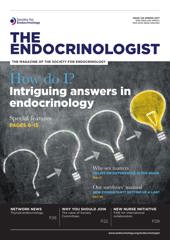Having a really good idea is not something that happens very often, at least not to me. I know I make a lot of decisions each week, and most of the time I have an idea of what to do, but increasingly that relies on process and experience.
I’m thinking about those REALLY good ideas that apparently reveal themselves to an individual in a moment of pure clarity, and make those around them green with ‘why didn’t I think of that?’ envy. The zip, cat’s eyes in the road, pivoted scissors, Lego … all genius answers to the questions of how to make clothes fit, see where to drive, hold and cut material with one hand and build a bespoke model rocket that doesn’t need glue.
In the retelling, these ideas are sold as having arrived fully formed, out of nothing, but I think the maxim that genius is 1% inspiration, 99% perspiration still mostly holds true. The original light bulb man Thomas Edison had a whole team of people trying out thousands of different filaments before they settled on a winner, and it’s hard to get past that rule of 10,000 hours of time needed to get good at something.
So, one way to overcome a problem is to be born with a high degree of innate talent, start perspiring and wait. However, a less sweaty and shorter way to get a solution may be to ask someone who has already conquered it and use their idea. In this issue, we go from macro to micro, from sick horses to extracellular vesicles, to tap into the knowledge of people from all across the patch.
Fran Ebling and Jo Lewis give a biological basis to winter survival strategies, while Kim Jonas shows you how to use super-resolution microscopy to resolve how proteins interact. Jeremy Tomlinson gives sage advice on how to think about the HPA axis in the critically ill, and Phil Ambery and Lutz Jermutus walk us through the tricky task of shepherding a drug into clinical practice.
Tips from Matthew Simmonds and Dominic Cavlan should steady faint hearts moving up the career ladder to more senior positions. Finally, in the pursuit of understanding how we think and what shapes our thought processes and ideas, Glenda Gillies’ article serves as an encouraging reminder that all the really interesting aspects of human behaviour are hugely influenced by hormones. Which is, of course, another reason to do what we do
Best wishes
Tony Coll
Editor, The Endocrinologist







